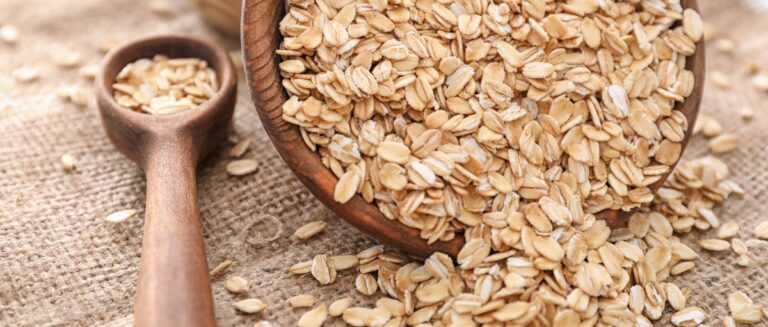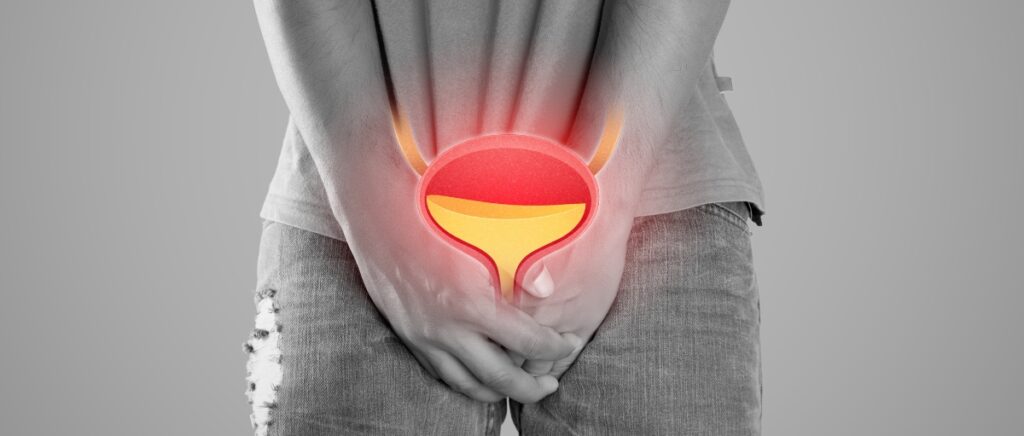Do you often scan for the nearest restroom as soon as you arrive somewhere? Do you wake up multiple times a night with a sudden urge to pee? If you’re struggling with frequent urination, you’re not alone. According to the Urology Care Foundation, over 33 million Americans contend with an overactive bladder. The constant need to go can be frustrating, embarrassing, and disruptive to daily life.
The good news is there are many steps you can take to regain control of your bladder. This comprehensive guide will delve into the common causes of frequent urination and provide practical, proven tips to reduce bathroom visits.
From simple dietary changes to pelvic floor exercises and bladder training techniques, you’ll come away with a toolkit of strategies to improve your symptoms and your quality of life. Let’s dive in!
How Often Should You Pee? What’s Normal and What’s Not
Frequent urination is exactly what it sounds like—needing to empty your bladder more often than usual. So, how often should you pee? Most people typically urinate 6-7 times in a 24-hour period. If you find yourself going more than 8 times a day or waking up several times a night to pee, you may be dealing with frequent urination.
It’s important to note that frequent urination is not the same as incontinence, which is when you experience uncontrollable urine leakage. However, frequent urination can be just as disruptive to your daily routine and quality of sleep.
So, how can you tell if your trips to the bathroom are outside the norm? Look out for these telltale signs and symptoms:
- Feeling like you need to urinate more than 8 times in 24 hours.
- Waking up more than once per night to pee.
- Getting sudden, intense urges to go that are difficult to hold back.
- Accidentally leaking urine if you don’t make it to the bathroom quickly enough.
If these symptoms sound familiar and impact your daily life, don’t brush them off as a normal part of aging. Frequent urination can have many different causes, some minor and some more serious, and there are steps you can take to improve bladder control.
Getting to the Root: Common Causes of Peeing a Lot
Frequent urination can have various causes, from simple lifestyle habits to more serious medical conditions. Understanding the root of your symptoms is the first step toward finding the right solution. Let’s explore some of the most common reasons you may be making frequent trips to the bathroom.
Lifestyle Factors
Your daily habits can greatly impact your bladder activity. Drinking large quantities of fluids, especially in a short time frame, naturally leads to more frequent urination. Pay attention to how much you’re drinking and what you’re drinking.
Consuming beverages with diuretic properties, like caffeinated coffee and tea, alcohol, and carbonated drinks, can increase your urine output and frequency. Even some medications, such as diuretics prescribed for high blood pressure, can be a culprit.
Bladder Irritants
Certain foods and drinks irritate the bladder and amplify the urge to go. If you’re struggling with frequent urination, you may want to limit your intake of:
- Acidic foods and drinks, like citrus fruits and juices, tomatoes, and coffee
- Spicy foods
- Sugary foods and beverages
- Artificial sweeteners
- Carbonated beverages, even if they don’t contain caffeine
Pay attention to your diet and note if you experience more symptoms after consuming these common triggers.
Weakened Pelvic Floor Muscles
Your pelvic floor muscles are crucial in supporting your bladder and controlling urination. When these muscles weaken, you may feel the need to go more often or have difficulty holding the urge.
Pregnancy and childbirth are common causes of weakened pelvic floor muscles in women. As we age, these muscles can also naturally lose some of their strength and tone, leading to more frequent urination.
Underlying Health Conditions
In some cases, frequent urination can be a symptom of an underlying health issue that requires medical attention. Potential conditions include:
- Urinary tract infections (UTIs)
- Diabetes or increased blood sugar levels
- Overactive bladder syndrome
- Enlarged prostate in men
- Vaginitis in women
- Interstitial cystitis (painful bladder syndrome)
- Bladder stones or cancer (less common)
If you suspect that a health condition may be the reason behind why you’re peeing a lot, it’s important to consult with your doctor for an accurate diagnosis and appropriate treatment plan.
Take Action: How to Reduce the Constant Urge to Pee
If the constant urge to pee is impacting your daily life, the good news is there are many natural techniques you can try to alleviate your symptoms. Implementing these strategies consistently can help you regain control of your bladder and reduce those urgent trips to the bathroom.
Bladder Training 101
Just like any other muscle, your bladder can be trained to hold more urine for more extended periods. Bladder training involves gradually increasing the intervals between urinating and retraining your bladder to wait longer before signaling it’s full.
Start by tracking how often you typically urinate. Then, extend the time between bathroom trips by 10-15 minutes. If you feel the urge to go before your scheduled time, try distraction techniques like deep breathing or pelvic floor exercises (more on those next) until the urge passes. Gradually lengthen the intervals over several weeks until you can wait 3-4 hours between bathroom breaks.
Don’t Neglect Your Pelvic Floor
Strengthening your pelvic floor muscles can significantly improve bladder control. Kegel exercises are a simple, effective way to tone these important muscles. Here’s how to do them:
- Locate your pelvic floor muscles by imagining that you’re trying to stop the urine flow or prevent passing gas.
- Squeeze those muscles and hold for 5-10 seconds, then release for 5-10 seconds.
- Repeat this hold-and-release cycle 10 times, 3 times a day.
You can do Kegels anytime, anywhere—while sitting at your desk, watching TV, or waiting in line at the grocery store. Aim to build up to holding for 10 seconds and completing three sets of 10 repetitions daily.
Make Smart Lifestyle Choices
Making some simple changes to your daily habits can have a big impact on your bladder health.
Try these tips:
- Cut back on known bladder irritants like caffeine, alcohol, and carbonated drinks.
- Limit fluid intake in the evening, particularly 2-3 hours before bedtime.
- Maintain a healthy weight to reduce extra pressure on your bladder.
- Eat plenty of fiber to prevent constipation, which can worsen urinary frequency.
- Quit smoking, as tobacco can irritate the bladder and increase the risk of bladder cancer.
- Practice stress management techniques, as stress and anxiety can heighten the urge to go.
Tweak Your Bathroom Habits
Believe it or not, how you use the bathroom can also affect how often you need to go. Implement these habits for better bladder control:
- Take your time on the toilet to ensure you’re fully emptying your bladder each time you go.
- Resist the urge to go “just in case” before leaving the house or taking a trip—this can train your bladder to signal fullness too frequently.
- After urinating, try double voiding: Remain on the toilet for a minute, then try to go again to empty any remaining urine.
- Maintain good hygiene to prevent UTIs, which can increase urinary frequency and urgenc.y
When It’s Time to See a Doctor
While natural techniques can be very effective for many people, there are times when frequent urination warrants a trip to the doctor. Make an appointment with your healthcare provider if:
- Natural methods don’t improve your symptoms after several weeks.
- Frequent urination is significantly disrupting your daily activities or sleep.
- You experience pain or burning when urinating.
- You notice blood in your urine.
- You have other symptoms like fever, back pain, or unexplained weight loss.
In these cases, it’s important to rule out or treat any underlying health conditions contributing to your symptoms. Don’t hesitate to advocate for your bladder health – you deserve to find relief.
How to Stop Peeing So Much: Medical Interventions
If you and your doctor determine that natural methods alone aren’t enough to manage your frequent urination, several medical interventions can help. The right treatment for you will depend on the underlying cause of your symptoms.
For overactive bladder, your doctor may recommend medications that relax the bladder muscle and reduce the frequency and intensity of urges. Anticholinergic drugs like oxybutynin or tolterodine are common options.
If an enlarged prostate is contributing to your symptoms, alpha-blockers may be prescribed to relax the prostate and bladder neck muscles, allowing urine to flow more easily.
In some cases, procedures like Botox injections into the bladder muscle can help reduce muscle spasms and improve bladder capacity. Nerve stimulation techniques may also be an option, which uses electrical pulses to modulate bladder activity.
As a last resort, surgery to improve bladder function or relieve obstruction may be recommended. However, most people find relief through a combination of lifestyle changes and less invasive medical treatments.
When exploring how to stop peeing so much, the key is working closely with your doctor to find the best treatment plan for your needs and goals. Don’t be afraid to ask questions, discuss your concerns, and advocate for your quality of life.
Regaining Control, Restoring Confidence
Frequent urination can take a toll on your physical and emotional well-being, leaving you feeling frustrated, embarrassed, and tethered to the nearest bathroom. But with the right knowledge and tools, you can reduce the constant urge to pee and regain control of your life.
Start by tuning into your body and identifying any triggers or underlying causes of your frequent urination. Make simple lifestyle shifts like adjusting your fluid intake, avoiding dietary irritants, and strengthening your pelvic floor. If natural methods don’t provide enough relief, don’t hesitate to consult your healthcare provider about medical interventions that can help.
Remember, bladder health is a crucial component of overall wellness. By prioritizing your urinary health and advocating for your needs, you can free yourself from frequent bathroom trips and regain the confidence to live life on your own terms. You have the power to improve your symptoms—one mindful sip, one Kegel, one habit change at a time.
Sources
Urology Care Foundation. (n.d.). Overactive bladder (OAB). Urology Care Foundation. https://www.urologyhealth.org/overactive-bladder
Wein, A. J., & Reider, C. R. (2015). Overactive bladder. In A. A. Wein (Ed.), Brenner and Rector’s The Kidney (10th ed.). National Institutes of Health. https://www.ncbi.nlm.nih.gov/books/NBK279430/
Bladder and Bowel Community. (n.d.). Bladder frequency. Bladder and Bowel UK. https://www.bladderandbowel.org/bladder/bladder-conditions-and-symptoms/frequency/
Mayo Clinic. (2023, June 15). Urinary incontinence: Symptoms and causes. Mayo Clinic. https://www.mayoclinic.org/diseases-conditions/urinary-incontinence/symptoms-causes/syc-20352808
Brigham and Women’s Hospital. (n.d.). Bladder irritants. Brigham and Women’s Hospital. https://www.brighamandwomens.org/assets/BWH/obgyn/pdfs/bladder-irritants.pdf
Better Health Channel. (2023, September 25). Pelvic floor. Better Health Channel. https://www.betterhealth.vic.gov.au/health/ConditionsAndTreatments/pelvic-floor
Cleveland Clinic. (n.d.). Frequent urination. Cleveland Clinic. https://my.clevelandclinic.org/health/symptoms/15533-frequent-urination
MedlinePlus. (2021, August 10). Urinary incontinence – aftercare. MedlinePlus. https://medlineplus.gov/ency/patientinstructions/000141.htm











